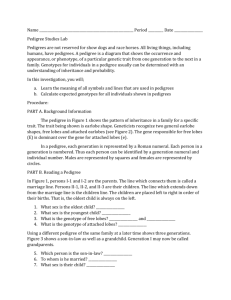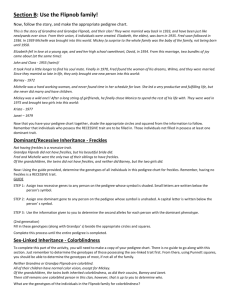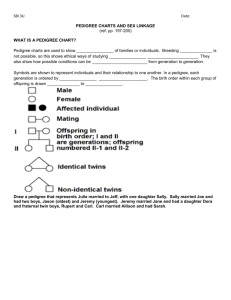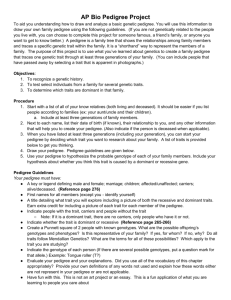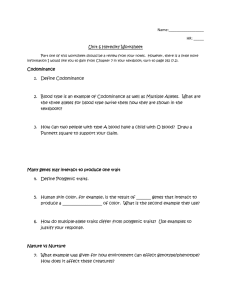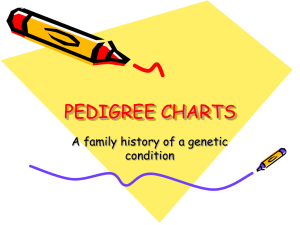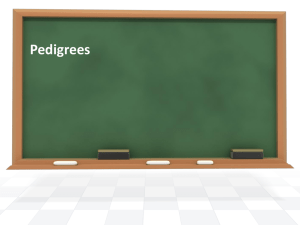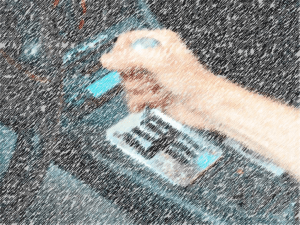File
advertisement
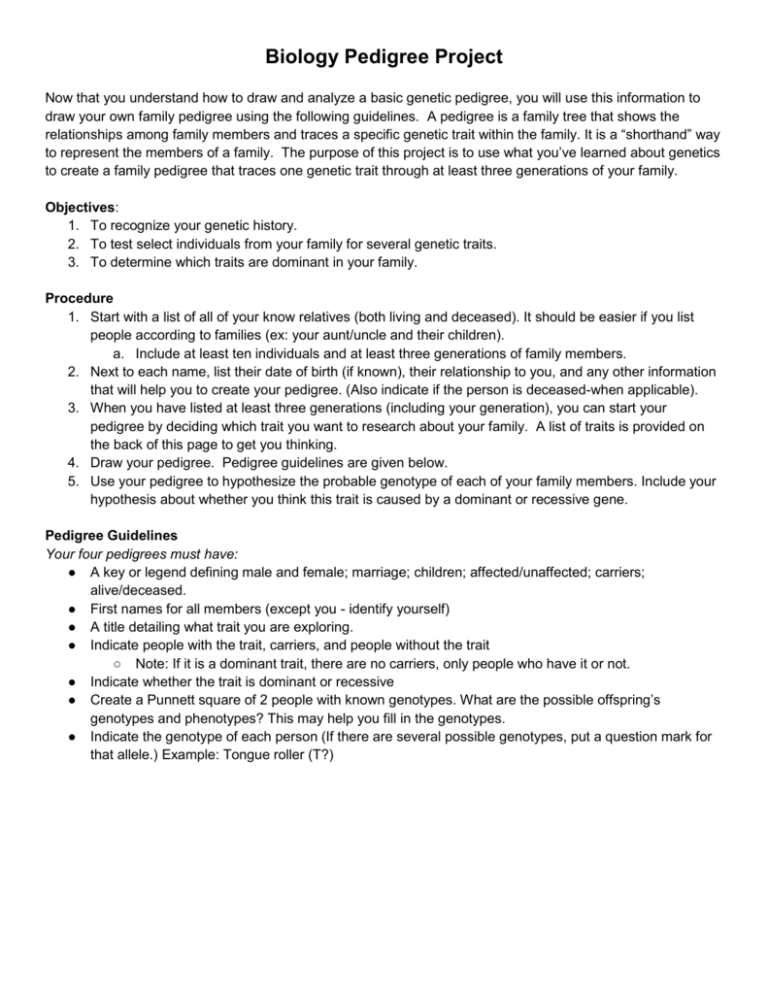
Biology Pedigree Project Now that you understand how to draw and analyze a basic genetic pedigree, you will use this information to draw your own family pedigree using the following guidelines. A pedigree is a family tree that shows the relationships among family members and traces a specific genetic trait within the family. It is a “shorthand” way to represent the members of a family. The purpose of this project is to use what you’ve learned about genetics to create a family pedigree that traces one genetic trait through at least three generations of your family. Objectives: 1. To recognize your genetic history. 2. To test select individuals from your family for several genetic traits. 3. To determine which traits are dominant in your family. Procedure 1. Start with a list of all of your know relatives (both living and deceased). It should be easier if you list people according to families (ex: your aunt/uncle and their children). a. Include at least ten individuals and at least three generations of family members. 2. Next to each name, list their date of birth (if known), their relationship to you, and any other information that will help you to create your pedigree. (Also indicate if the person is deceased-when applicable). 3. When you have listed at least three generations (including your generation), you can start your pedigree by deciding which trait you want to research about your family. A list of traits is provided on the back of this page to get you thinking. 4. Draw your pedigree. Pedigree guidelines are given below. 5. Use your pedigree to hypothesize the probable genotype of each of your family members. Include your hypothesis about whether you think this trait is caused by a dominant or recessive gene. Pedigree Guidelines Your four pedigrees must have: ● A key or legend defining male and female; marriage; children; affected/unaffected; carriers; alive/deceased. ● First names for all members (except you - identify yourself) ● A title detailing what trait you are exploring. ● Indicate people with the trait, carriers, and people without the trait ○ Note: If it is a dominant trait, there are no carriers, only people who have it or not. ● Indicate whether the trait is dominant or recessive ● Create a Punnett square of 2 people with known genotypes. What are the possible offspring’s genotypes and phenotypes? This may help you fill in the genotypes. ● Indicate the genotype of each person (If there are several possible genotypes, put a question mark for that allele.) Example: Tongue roller (T?) Suggested Traits Trait Dominant Recessive Eyelash length Long (1cm or more) Short (less than 1 cm) Widow’s peak Widow’s peak Straight hairline Dimples Dimples No dimples Freckles Freckles No freckles Ear lobes Free ear lobes Attached ear lobes Mid-digital hair Hair on middle digit No hair on middle digit Toe length 2nd toe longer Big toe longer Hand use Right-handed Left-handed Tongue rolling Tongue roller Non-tongue roller Cleft chin No cleft Cleft chin Curved thumb Hitchhiker’s thumb Straight thumb Family Pedigree Project Grading Guidelines and Rubric Please turn this sheet in with your project Name: _________________________________________ 4 Traits analyzed in pedigrees: ________________ _________________ ________________ ________________ Grading of this project will be based upon the following rubric. Pedigrees 4 traits investigated in your (or a fictional) family Indicates which trait is dominant and which is recessive Each pedigree should contain at least 10 people. You must include the following for each individual: Name (1pt) Male or female (1pt) Phenotype (1pt) Genotype (1pt) Proper connections (1pt) Pedigree goes back at least 3 generations Pedigree is on 8.5 x 11 inch paper (or larger) Has a key which uses the appropriate pedigree symbols Neatness TOTAL Points Possible 1 2 3 4 Total Points Possible 1 4 5 20 1 4 1 4 1 4 1 4 10 40 Points Earned / 40

